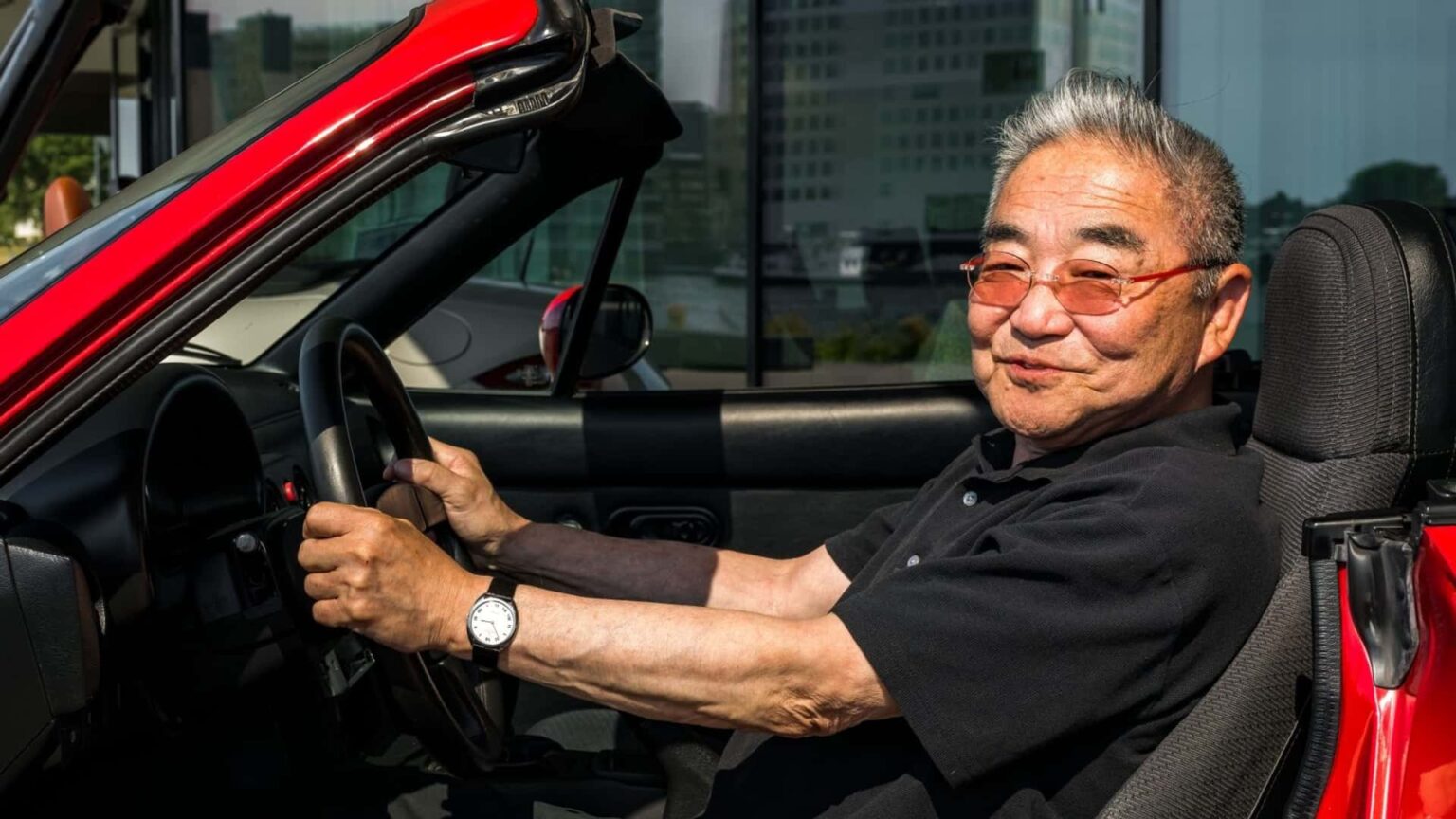Tom Matano, designer of the original Mazda Miata, died September 20th, 2025, aged 76. News of his passing emerged on social media over the weekend, and the Miata Reunion, of which Matano was a big supporter, confirmed his death with the hospital in San Francisco.
Matano’s long and storied career took him many places, but he is best known for his time at Mazda. He led Mazda’s first US design studio starting in 1983, and while there, led the production design work on the original MX-5 Miata, turning an idea into a reality. Shortly after, he oversaw the design of the third-generation RX-7, perhaps the most beautiful Japanese car of all time.
Matano was also a beloved member of the enthusiast community. He understood that the success of a car like the Miata was not simply to put it out on the market, but to support it. To that end, he constantly updated the car, encouraged the many who raced it, and was a fixture at Miata events right up until the very end. Many Miatas wear his signature and his tagline, “Always Inspired.”
Matano was an educator, too. Leaving Mazda in 2002 to become the executive director of the School of Industrial Design at San Francisco’s Academy of Art University. There, he taught more than just budding car designers, but design students of all types. He retired from the position earlier this year.
Photo by: Facebook / Mazda USA
Tsutomo “Tom” Matano was born in Nagasaki in 1947. He graduated from Tokyo’s Seikei University in 1969 with an engineering degree, but eyeing a career in automotive design, came to the US in 1970 to enroll at the Art Center College of Design in Pasadena, California. After graduation, GM hired Matano to work at the Oldsmobile division before sending him to Australia to the Holden design studio.
After seven years with Holden, Matano then moved to Germany to take a position with BMW. He was involved in the early designs of what became the E36 3 Series, but the German approach wasn’t for him. He recently told this reporter that at a company like BMW, you end up spending decades working on one model, but he wanted to have his hands in more projects.
After just a year at BMW, he moved back to Southern California to take on the job as chief designer at Mazda’s North American design studio in Irvine, California. It was at this time in Japan that former journalist and product planner Bob Hall was working on a concept for a “light-weight sports car,” in the mold of classic roadsters like the Lotus Elan, Alfa Romeo Spider, MGB, and Fiat 124.
That project had a champion in Kenichi Yamamoto—one of the “47 Samurai” who created Mazda’s rotary engine—who became Mazda’s president in 1984 and chairman in 1987. Mazda did much of the initial work on what became the Miata in Japan, but the US got involved when the automaker held a design competition amongst its various studios.

Photo by: Mazda

Photo by: Mazda
In 1986, Matano wrote a plan for the future of the Miata. “I wrote the three-generation story, as if somebody 20 years later bought A Collector’s Guide to [the] Miata,” he once told me. His aim was not just to make a sports car, but to nurture it over its life.
The RX-7 was the result of another design competition, one which Matano’s California studio won. Mazda chose a design by Wu-Huang Chin, but Matano was the one to set the tone for the car. “My personal wish or goal was to make it a timeless design.”
After the successes of the Miata and RX-7, Matano rose through the ranks, heading up R&D at Mazda North America and then overseeing all of the automaker’s global design studios.
Matano was a fixture in the community. A guest judge at the Pebble Beach Concours every year, a regular at the Miata Reunion and other Mazda events, and someone who always made the time to talk, no matter how busy.
On a personal level, I was lucky to work with him on a number of stories about his work at Mazda, including the RX-7 and the 1996 Miata M Coupe concept. He was one of the nicest, most thoughtful people in the automotive world, and someone whose passion for cars, design, and people never diminished. And he kept both an FD RX-7 and a 1996 Miata “M” Edition, which he regularly drove around his adopted home of the San Francisco Bay Area.
His legacy lives on in the million-plus Miatas Mazda has built, in the gorgeous FD RX-7, in the work of his many students, and in anyone lucky enough to know him.
Read the full article here



